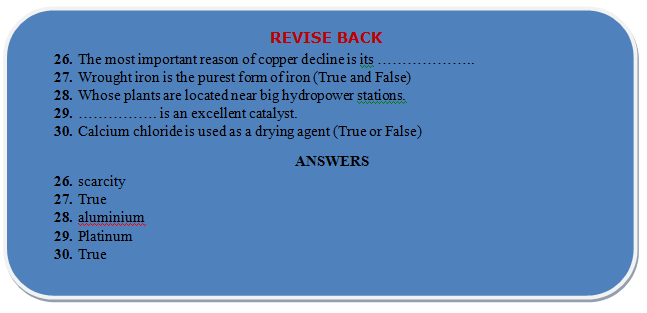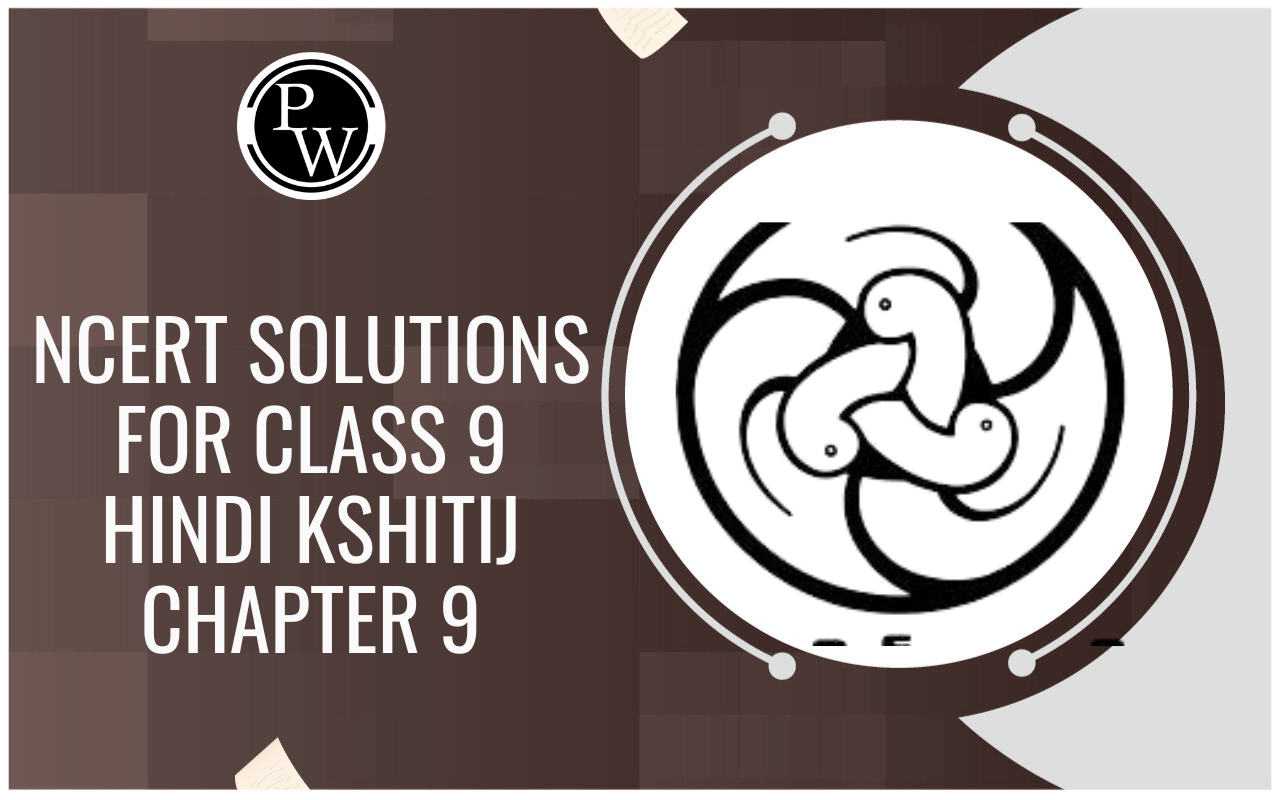
Uses of some common metals
Metal and Non-metals of Class 8
USES OF SOME COMMON METALS
COPPER:
Copper was among the first metals discovered by man along with gold and silver. It is reddish brown in colour.
It is highly ductile , i.e., capable of being drawn into wires, and also a very good conductor of heat and electricity.
It is used in making:
- electric wires and cables, utensils and semi-precious ornaments.
- coins and statues (in the form of its two alloys, brass and bronze).
- electronic devices.
- several electroplating operations.
The use of copper in the electrical goods industry has declined due to the increasing use of aluminium as its substitute. Also copper is costly.
But the most important reason from its decline is its scarcity.
IRON:
Iron is definitely the most useful of all metals. It is among the most ancient metals known to man.
There are three different varieties of manufactured iron, depending mainly on the proportion of carbon present in it.
These are:
- pig iron (or cast iron)
- wrought iron
- steel
Wrought iron is the purest form of iron, since it has the least proportion of carbon present in it, while pig iron is the most impure form of iron, since it has the highest proportion of carbon present in it.
Steel is the most widely used form of impure iron, to the extent of being the very basis of modern life.
Iron is used in the manufacture of:
- radiators, railings, manhole lids, drain pipes [in the form of pig iron].
- tanks, cylinders, smaller pipes, agricultural tools, nails and bolts, furniture, gates, etc. [in the form of wrought iron].
- bridges, ships, machine parts, automobiles, buildings and utensils [in the form of steel].
- power transmission towers.
ALUMINIUM:
Aluminum is definitely the second most useful metal today, after iron.
It is silvery white in colour, malleable, ductile, light and strong, and it is a very good conductor of heat and electricity as well.
Also it is resistant to corrosion. Therefore aluminum finds wide range applications.
It is used
- to make utensils, cans for drinks, furniture, window frames, etc.
- in making electric wires.
- for packaging of foodstuffs (in the form of aluminum foil).
- as a paint ingredient (in the form of its powder mixed with linseed oil, which protects against rusting when applied to the surface of iron).
- to make the bodies of aircraft and automobiles, and a machine parts and tools. This is because, in the form of its alloys duralumin and magnesium, it is light and very strong.
- in making mirrors (as reflector material).
Cheap and abundant power is a must for the extraction of aluminium from its ore.
Therefore, aluminium plants are located near big hydropower stations.
ZINC:
Zinc is a bluish white metal. It is neither malleable nor ductile, rather it is brittle. It is a good conductor of electricity.
Zinc is used
- to make dry cells and electrodes.
- to make alloys like brass and bronze that are used to make utensils, statues, decoration pieces, etc.
- to coat (galvanization) iron sheets so as to prevent them from rusting.
- in the extraction of silver and gold from their ores.
LEAD:
Lead is a heavy, silver grey metal. It stays unaffected by impure water, steam and dilute acids.
It has low melting point.
It is used for:
- making pipes and other sanitary fittings, bullet tips and tin roofs.
- covering underground electric and telephone cables.
- making solder and type metal.
- the preparation of compounds like lead sulphate, red lead and litharge, which are used in paint and emulsion products.
- making screens that protect against X-rays and other radioactive radiations.
MAGNESIUM:
Magnesium is a silvery white metal. It is available in the shape of ribbons.
It is used:
- in preparing fireworks, since it burns with a dazzling light.
- in the preparation of alloys like duralumin and magnalium.
- for making fuse wire.
- in nuclear reactors for the absorption of neutrons.
TIN:
Tin is a silvery white metal. It is highly malleable and ductile. It does not rust.
It is used:
- to make cans for storage of foodstuffs.
- for coating of utensils made of other metals so as to prevent them from corroding.
CALCIUM:
Calcium is a white lustrous metal that slowly dulls down on exposure to air.
It rarely occurs in free state, but in combined state it is found in the earth’s crust as phosphates, sulphates, carbonates, etc.
The sulphate and chloride salts of calcium are present in hard water.
In its various combined states, calcium has wide applications
- Calcium chloride is used as a drying agent, i.e., for physical removal of water.
- Calcium carbonate is used in the manufacture of glass, cement, lime, washing soda etc.
- Marble, a non-crystalline form of calcium carbonate, is used for building and laboratory purposes. It is used also to make statues.
- Chalk, another form of calcium carbonate, is used for distempering of walls, in toothpastes and talcum powder, and in medicines for indigestion etc.
GOLD:
Gold is a shiny yellow metal. It is extremely precious owing to its beauty, scarcity and chemical and physical stability.
Gold is highly malleable and it is resistant to corrosion. It is a very good conductor of heat and electricity as well.
Therefore it is used in
- the manufacture of electronic devices like telephones, computers, etc.
- making ornaments and coins.
- dentistry to fill into teeth cavities (in the form of amalgam, an alloy made of gold, silver and mercury).
SILVER:
Silver is an half white, lustrous metal. It is the most ductile metal known to man.
It is also the best known of all metallic conductors of electricity.
It is used
- for making jewellery, since it is fairly scarce and therefore semi-precious.
- for filling into teeth cavities (in the form of amalgam, an alloy made of gold, silver and mercury).
- as a water purifier
- for making electrodes and in several electroplating operations.
- in photography (in the form of silver nitrate and silver bromide).
- in the form of silver iodide to seed clouds in order to create “artificial rain”.
|
|
Though silver is the best known metallic conductor of electricity and the most ductile metal, it is not used for making electric wires. This is because it is rather costly and not a chemically stable as is required for transmission of electricity. |
MERCURY:
Mercury is a silvery white, liquid metal. It does not moisten glass and it expands a lost on heating.
Therefore it is used in
- Thermometers (as thermometric liquid):
- barometers and other scientific apparatus.
- dentistry, for filling into teeth cavities in the form of alloys known as silver amalgam and gold amalgam.
PLATINUM:
Platinum is a lustrous and a very precious metal. It is not reactive, just as is god, Platinum is an excellent catalyst.
It is used
- for making electrodes and electrolytic cells.
- for making expensive ornaments and watches.










